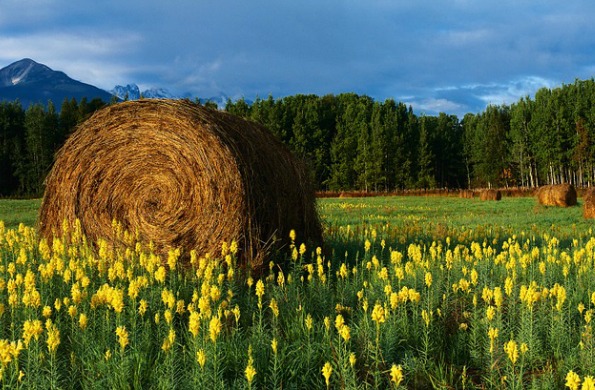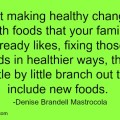**Disclaimer** While the word of wisdom gives us basic guidelines for health, it leaves the interpretation of those guideline up to the individual members. This blog is not intended to replace your medical professional or the divine revelation of the Word of Wisdom, but rather it is practical knowledge that I have accumulated over the years in my own pursuit of a healthier lifestyle which I am passing along in the hopes that it will benefit others.**
Successful gardening requires a number of components in order for us to produce the results we are looking for. We need Sufficient Space, Proper Soil, Time, Quality Seeds or Garden Plants, Adequate Moisture, and Sunlight.
- Space: Ideally you will want a good size space in an open area that receives full sun for most of the day. If this is not possible either due to a small or overly shaded yard you will need to get more creative. My home is situated on a corner of land that slopes on both sides of the house. Unfortunately the more level areas of the yard are covered in shade for the better part of the day. In fact the only place that gets sun throughout the entire day is smack dab in front of the house, and I guarantee that the local municipality would not look kindly on it if I were to start a vegetable plot in an area so visible to the street.
 So what do you do if you live in an area where you either don’t have adequate space, or the local codes don’t allow you to put a garden wherever you want to? Well, in our case we had to build up. On the sloping areas I experimented with terraced gardening. This can be done in a variety of different ways, with various materials, from stone and bricks for a more finished look that will be an attractive addition to your present landscaping, to railroad ties, or straw bales for a less expensive more casual look where appearance might not matter so much.
So what do you do if you live in an area where you either don’t have adequate space, or the local codes don’t allow you to put a garden wherever you want to? Well, in our case we had to build up. On the sloping areas I experimented with terraced gardening. This can be done in a variety of different ways, with various materials, from stone and bricks for a more finished look that will be an attractive addition to your present landscaping, to railroad ties, or straw bales for a less expensive more casual look where appearance might not matter so much.
We have small pockets of space in our yard that get full sun most of the day, but none of these are large enough to make a real garden, so instead I have smaller raised garden beds spotted around the back yard. I have also built garden towers to grow my garden space vertically so that I can keep the plants confined to the areas that get the most sun.
A garden tower can be easily built with wire caging. Shape the wire into a cylinder, of the height and width that you want it, using zip ties or other means of securing the ends together. Line the inside of the wire with garden cloth, or a layer of straw, filling the center with the soil.
If you want it to be more decorative you can use sturdy wood slats to build the frame of your cage. This is what I did, painting them white to go with our picket fence, and lining them with burlap sacks that I made to fit the tower’s dimensions, making it functional without detracting from the landscaping.
You can make the tower as tall as you like, but I recommend no more than 3 to 4 feet so that it is easier to maintain throughout the growing season. Also the taller and wider it is the more soil it will need, and the heavier it will become, which will place added strain on the framing materials. You’ll want to consider the weight vs the strength of the wire or wood that you will be using so that you don’t end up with a collapsed tower half way through the summer.
Pots can also be used to fill small spaces with plants that don’t spread out too much like cherry tomatoes.
- Soil: If you are blessed with good soil, count your blessings because many of us are not. I live in an area where the soil is dry and rocky, and you can’t dig 8 inches without hitting rock. To compensate for this people in my neighborhood build raised bed gardens and haul in soil to fill them.
Decide what you will be planting in your garden and then consult a local garden center for the best soil for the plants you will be caring for, or contact your county extension office where they usually have experts that can not only help you get your soil tested, but also advise you as to what you need to do to make your soil better if it is lacking in nutrients or proper consistency.
- Time: You will need to block out enough time to get the job done whether it is digging up a plot of land, or building a raised bed, tower, or other structure. You will need to commit to not only tilling the soil and planting the seeds, but also to the time needed to pull weeds, water, and check the plants from time to time to handle pest control if it is needed.
- Seeds and Plants: Make your decision based on the length of your growing season, and what you are planning on planting. Determine if you have time to plant from seeds or if you should purchase seedlings that have already been started at a plant nursery.
 Planting nursery plants gives you a head start on the growing season, and tends to be a slightly quicker method, but nursery plants are generally not organic unless you have a facility nearby that specializes in organic plants like the Rodale Institute. If they do not specify, you run the risk of planting something that may be a GMO. Organic seeds are easier to find, and they are much less expensive, but for some of us the seasonal clock is ticking. So decide what your priorities are and look at the time you have to spend, how long you have before harvest time, and your budget. Most people do a combination of seedlings and seeds, but that is a choice that only you can make.
Planting nursery plants gives you a head start on the growing season, and tends to be a slightly quicker method, but nursery plants are generally not organic unless you have a facility nearby that specializes in organic plants like the Rodale Institute. If they do not specify, you run the risk of planting something that may be a GMO. Organic seeds are easier to find, and they are much less expensive, but for some of us the seasonal clock is ticking. So decide what your priorities are and look at the time you have to spend, how long you have before harvest time, and your budget. Most people do a combination of seedlings and seeds, but that is a choice that only you can make.
If you are buying plants from a nursery, check them before buying. Make sure that the plants are in pots that are appropriate for their overall size. If a pot is too small the roots will be cramped and tangled. Look at the bottom of the pot. If the roots are trying to get out of the holes in the base, then the pot is too small and the plant may not have been getting enough nutrients to be healthy. Is the pot too big? If the plant seems lost in the pot it probably doesn’t have a large enough root system to use all of the water and may be subject to disease from being in a state of constant moisture. A plant is in the right size pot if it fits snugly, but isn’t trying to get out through the bottom.
Look at the color of the leaves. Vegetable seedlings should be a dark green. A dark green leaf tells us that the plant is producing enough chlorophyll for the energy it needs to grow. Limp or yellowed leaves may indicate a sickly plant that will not do well in your garden.
- Moisture: If you are planting directly into the ground monitoring rain fall and the level of dampness in the soil may be all that you need to do. If you have raised beds however it may be a good idea to place a layer of gravel under the soil to ensure proper drainage. This will be especially important if you have hard packed soil as a base for your beds. You do not want water to sit in pools around your plants as this can cause problems with rot, and insect infestations.
- Sunlight: Unlike some ornamental varieties, most food plants need full sun for the majority of each day, and will not grow or produce well if they are only getting a few hours. Even if you have to split your garden up into several smaller beds, make sure that you are taking advantage of all of the available sunlight. That will ensure the best result for all of your hard work.

To read more of Denise’s articles, click here.
Don’t be afraid to mix it up a bit, a garden doesn’t have to be strictly utilitarian. Plant flowers in front of or alongside your vegetables, especially if your garden is visible to the road to make it more attractive. Also plants such as Garlic, Marigolds, Chives, Lavender, and Onion will deter some kinds of animals from your garden. Plant them between the rows of vegetables, or around the perimeter of the garden to keep out unwanted pests.
Gardening is a multi-beneficial pursuit. It gives us an outlet for stress, exposes us to the health benefits of fresh air, exercise, and sunlight. It will bring us closer to nature, both the lovely and the functional aspects of it, and can provide us with healthier foods than what might be available to us in our grocery stores.
So get creative, and enjoy all of the benefits of gardening as the summer months continue to unfold.
Resources:
http://rodaleinstitute.org/vertical-gardening-in-the-urban-environment/
https://www.houselogic.com/by-room/yard-patio/how-to-buy-healthy-plants/
http://www.wikihow.com/Keep-Animals-Out-of-Your-Vegetable-Garden
About Denise Mastrocola
Denise is a Michigander turned Pennsylvanian, who has been writing stories since Elementary School. Denise won an award at the annual Lansing Youth Talent Show, when she was in 10th grade, for a short story entitled Procrastination is Fatal, but didn’t decide on writing as a career until she was 28 years old. While homeschooling her older children she spent 4 years working through a course from The Institute of Children’s Literature.
Through the years Denise’s children have had a variety of health issues, many of which have been linked to various sensitives; having spent more than 20 years researching and trying different things Denise has a boots on the ground view on healthier living.
Denise currently writes for 2 blogs and has several books in different stages of completion. She is planning to break ground in e publishing, and hopes to have her first Historical Fantasy book which is set during the renaissance, “Lisa, My Lisa?” ready by the first of the year.
Twitter •






